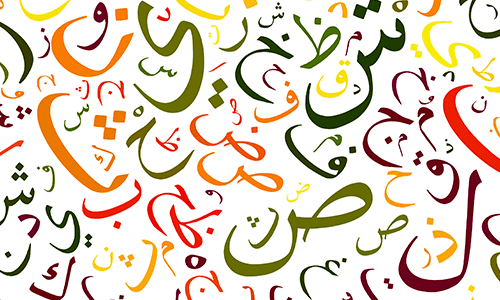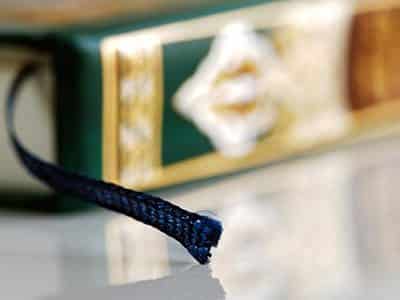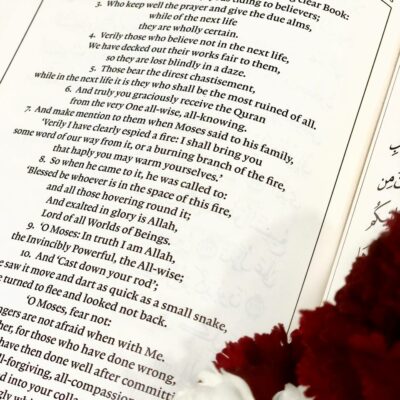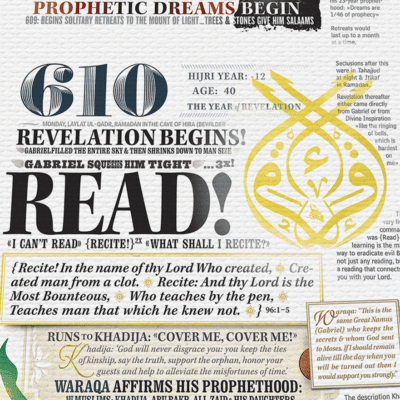Level 1: Al Qa’idah Al Nuraniyah
USD$99.00 / month
- Teachers: Choose From Our Qualified Teachers Below
- Course Duration:
– $99/month (8 lessons)
– Minimum Subscription of 3 Months
- Start Date: Ongoing Weekly Classes
- Time: Choose the time of the week that works for you [ NOTE: The time that appears on the drop-down is adjusted for your time-zone.]
- About the Course: This is a one-on-one course. A more affordable group class is also available
Level 1: Al Qa’idah Al Nuraniyah
Ustadh Samer Jaber, Ustadha Salma and Ustadha Sawsan
This gateway to Learning Arabic and Tajweed will teach you how to read the Arabic script fluently and articulate the Quran correctly using the foundational rules of Tajweed.
About the Course
This gateway course to learning Arabic will teach you how to read the Arabic script and set your foundation for learning the rules of grammar by mastering the alphabet, and learning how to read any voweled Arabic text. The technique used in the course is based on traditional, time-tested methods of learning how to read. Through practical application and repetition, the course enhances the memorisation needed to internalize the rules.
- The first level in our Tajweed program which is designed to take you from no knowledge of Tajweed to a high level of proficiency.
- Set the correct foundations for reading any Arabic script properly.
- Become familiar with basic rules of Quranic recitation.
- Learn how to properly articulate sounds, sun and moon letters and lengthen vowels.
- Learn about the double-consonant, and merge or hide the nun and meem appropriately.
Upon completion students receive a certificate of completion signed by their teacher.
Course Syllabus
Staged Reading: Learning to read by formulaic identification and repetitive articulation of individual consonants and vowels in words.
- The Arabic Alphabet
- Joining Letters
- Diacritical Accents (Vowels)
- Stage Reading Formula
- Nunation
- Long Vowels
- Silent Letters
- Soft Consonants
- The Hamza
- Doubled Letters (Shadda)
Course Subscription
All our courses are offered on a monthly subscription basis in which students receive anywhere from 7 to 10 classes per month in the one on one subscription, or 4 to 5 classes in the group subscription (see below).
Type and Cost of Subscription
Students can choose to enroll in any of the level 1 to 4 courses as a one on one student or with a group. One on one students meet with their teacher twice a week for 25 minutes each at the time most suitable for them as per their selected teacher’s availability. The monthly subscription for one on one students is 99 USD and classes begin immediately upon subscription.
Group classes are offered regularly and run once a week as per the announced day and time on the website (usually, but not always, on a weekend); the monthly subscription in a group course is 25 USD.
Class Durations
One-on-one classes run for 25 minutes (not half an hour).
Group classes: The maximum number of students in a group class is 4 in which each student gets about 15 minutes with the teacher. Students in group classes are encouraged to remain for the duration of the whole class in order to benefit from the teacher’s feedback to the other students, but it’s not a must.
Class duration depends on the number of students in attendance. If all 4 students attend then the class runs for one hour; if only 3 students attend then it’s 45 minutes; 2 students means the class runs for 30 minutes and only 1 student in attendance means the class runs for 15 minutes. Each group class has a telegram or whatsapp group with the teacher for timely communication about attendance.
The Academic Calendar
We have 4 terms at Kiflayn and you can sign up at any term. However we have end of term holidays for our teachers and they last anywhere from 7 to 10 days. We also have the end of Ramadan and Eid holidays. We have factored these holidays into our schedules so that classes don’t have to be made up. So when you subscribe for 3 months you will receive all the number of classes you are owed even if there is a holiday.
Our Cancellation and Make Up Policy
One on One students are allowed only one makeup class per month with a 24 hour notice. Otherwise any class missed with less than 24 hours notice, or none at all, will not be made up. Group course students who miss class are not owed a make up. If a teacher cancels a class then he or she will offer students a make-up session within a reasonable time-frame.
Female Students and Menstruation
At Kiflayn, along with other Islamic institutes around the world, we follow the Maliki position which allows women during their menses and lochia to recite the Quran for the purpose of teaching, studying and revising. It is best to avoid touching the mushaf or the Quranic verses while on menses, if you are not Maliki, and use phones or tablets with covers instead.
Breaks and Holidays
Kiflayn’s tajweed program runs throughout the year on a 4-term system. Each term has an end-of-term break, as well as Eid and Ramadan holidays. Please review our scheduled holidays for 2024 below.
April 3rd-14th (Ramadan/Eid al-Fitr)
June 15th-21st (Eid al-Adha)
July 1st-2nd – Mid Term Break
Sept 22-Oct 3rd – Mid Term Break
Dec 25th-Jan 3rd End of Year Break
Related products
Tajweed
Tajweed
Tajweed







